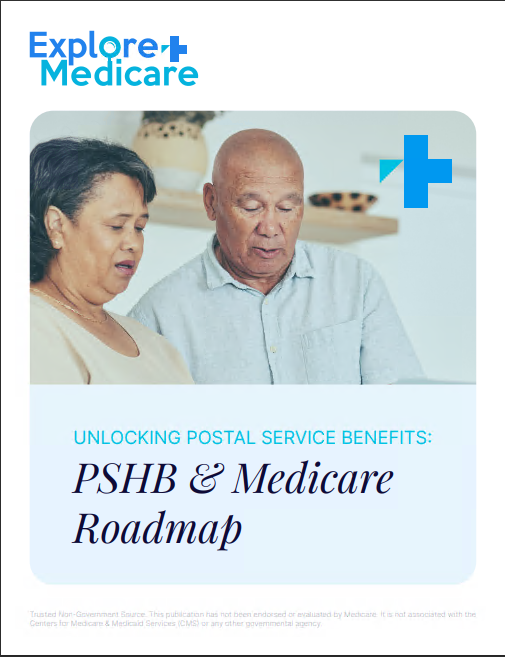Key Takeaways
-
Understanding Medicare beyond the basics helps you avoid unexpected healthcare expenses and secure your future.
-
Regularly reviewing your Medicare plan choices can significantly reduce out-of-pocket healthcare costs.
Medicare: Beyond Just the Basics
You’re likely familiar with Medicare Parts A and B, but securing your healthcare future requires you to go beyond the basics. Medicare might seem straightforward at first glance, but missing critical details can lead to costly mistakes. Let’s dive deeper and uncover essential information that helps you navigate your healthcare choices with confidence.
Why It’s Essential to Understand Medicare’s Annual Enrollment
Medicare’s Annual Enrollment Period (AEP) runs from October 15 to December 7 each year. This period allows you to:
-
Enroll in a new Medicare Advantage (Part C) or Prescription Drug (Part D) plan.
-
Switch between Original Medicare and Medicare Advantage.
-
Drop or change your Medicare Part D coverage.
Being proactive during this window ensures your plan remains aligned with your current healthcare needs. Missing this period could mean waiting an entire year before making necessary adjustments, potentially increasing your healthcare expenses.
Don’t Ignore the Annual Notice of Change
Every year, around late September or early October, your Medicare plan sends an Annual Notice of Change (ANOC). Here’s why you shouldn’t ignore it:
-
It outlines changes in your coverage, premiums, deductibles, copayments, and provider networks.
-
Reviewing the ANOC helps you decide if your current plan remains suitable or if adjustments are necessary.
Mark your calendar and thoroughly review this notice. Ignoring it can lead to unexpected costs or coverage gaps.
Understanding the Real Costs of Medicare
While Medicare covers many healthcare expenses, it doesn’t pay for everything. Knowing exactly what Medicare does—and doesn’t—cover is vital.
Medicare Part A Costs (Hospital Insurance)
Medicare Part A typically covers hospital stays, skilled nursing facility care, hospice, and some home healthcare. But it’s not entirely free:
-
In 2025, the deductible for inpatient hospital stays is $1,676 per benefit period.
-
After 60 days in the hospital, you’ll pay coinsurance of $419 per day up to day 90, and $838 per day beyond that, using lifetime reserve days.
-
Skilled nursing facility care requires coinsurance of $209.50 per day after the first 20 days.
Medicare Part B Costs (Medical Insurance)
Medicare Part B covers doctors’ services, outpatient care, preventive services, and certain home health visits. However, costs are involved:
-
The standard monthly premium is $185 in 2025.
-
An annual deductible of $257 must be met before Medicare coverage kicks in.
-
After meeting your deductible, Medicare generally covers 80% of costs, leaving you with 20% coinsurance.
Knowing these numbers helps you better plan financially for healthcare.
Medicare Advantage Plans: The Extras You Need to Know
Medicare Advantage Plans (Part C) bundle Parts A, B, and often Part D, providing additional benefits like vision, dental, and hearing coverage. Here’s what you should know:
Plan Networks Matter
Medicare Advantage plans typically use networks:
-
HMOs require you to see doctors within their network.
-
PPOs offer greater flexibility but at a higher cost if using out-of-network providers.
Always check the network status of your preferred providers before enrolling to avoid unexpected expenses.
Supplemental Benefits
Medicare Advantage plans often include additional services:
-
Dental, vision, and hearing care.
-
Fitness programs.
-
Transportation assistance.
However, the availability and extent of these benefits vary widely. Always confirm exactly what’s included to avoid surprises.
Prescription Drug Coverage: Avoiding Pitfalls
Medicare Part D helps cover prescription drug costs, but it’s crucial to understand how coverage works to manage your expenses effectively.
The $2,000 Out-of-Pocket Cap for 2025
Significant in 2025 is the introduction of a $2,000 cap on out-of-pocket drug costs. Once you’ve spent this amount, you’ll no longer pay for covered prescriptions for the remainder of the calendar year. This cap removes the previous “donut hole” gap, making budgeting easier.
Formulary Awareness
Prescription drug plans have formularies, or lists of covered drugs. These lists categorize medications into tiers, affecting your copayments:
-
Tier 1: Preferred generic drugs (lowest copay).
-
Tier 2: Non-preferred generic drugs.
-
Tier 3: Preferred brand-name drugs.
-
Tier 4: Non-preferred brand-name drugs.
-
Tier 5: Specialty drugs (highest copay).
Review your plan’s formulary regularly to ensure your medications remain covered affordably.
Medicare Supplemental Insurance (Medigap): Filling Coverage Gaps
Original Medicare leaves gaps that could cost you significantly in coinsurance and deductibles. Medigap policies are designed to bridge these gaps.
How Medigap Works
Medigap covers expenses not paid by Original Medicare, such as:
-
Part A hospital coinsurance and deductibles.
-
Part B coinsurance and copayments.
-
Emergency healthcare during foreign travel (within policy limits).
When to Enroll
The best time to enroll in a Medigap policy is during your six-month Medigap Open Enrollment Period, starting when you’re 65 and enrolled in Medicare Part B. During this time, you can buy any Medigap policy without medical underwriting, meaning insurers can’t deny coverage or charge you more due to health conditions.
Medicare and Long-Term Care
A common misconception is that Medicare covers long-term care extensively—it does not.
What Medicare Covers
-
Short-term care in skilled nursing facilities following hospitalization (up to 100 days, with coinsurance after day 20).
-
Limited home health care services.
Planning Ahead
For extensive long-term care coverage, consider additional insurance options, such as long-term care insurance or life insurance policies with long-term care benefits. Planning early can help mitigate significant future expenses.
Coordinating Medicare With Other Insurance
Many individuals have additional insurance, such as retiree coverage, veterans’ benefits, or employer-sponsored plans. Proper coordination of these benefits ensures you maximize coverage while minimizing costs.
-
Medicare typically serves as the primary payer.
-
Other insurance may cover what Medicare doesn’t, reducing your financial responsibility.
Always confirm how your plans coordinate to avoid unexpected billing.
Protecting Yourself Against Medicare Fraud
Unfortunately, Medicare fraud is prevalent. Protecting your benefits involves vigilance:
-
Never share your Medicare number except with trusted healthcare providers.
-
Regularly review your Medicare Summary Notices (MSNs) to spot errors or fraudulent charges.
-
Immediately report suspicious activities to Medicare authorities.
Staying vigilant can protect you from scams and keep your benefits secure.
Securing Your Medicare Future
Understanding Medicare deeply, reviewing your coverage annually, and staying informed about costs and benefits is critical. Medicare evolves, and your healthcare needs may change, so regular reviews and proactive decisions are vital.
For personalized advice tailored specifically to your healthcare needs, get in touch with a licensed agent listed on this website today and ensure you’re making the best choices for your future.









